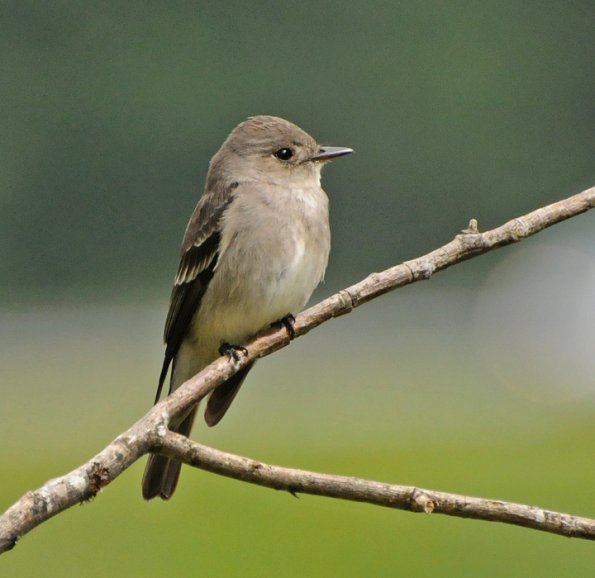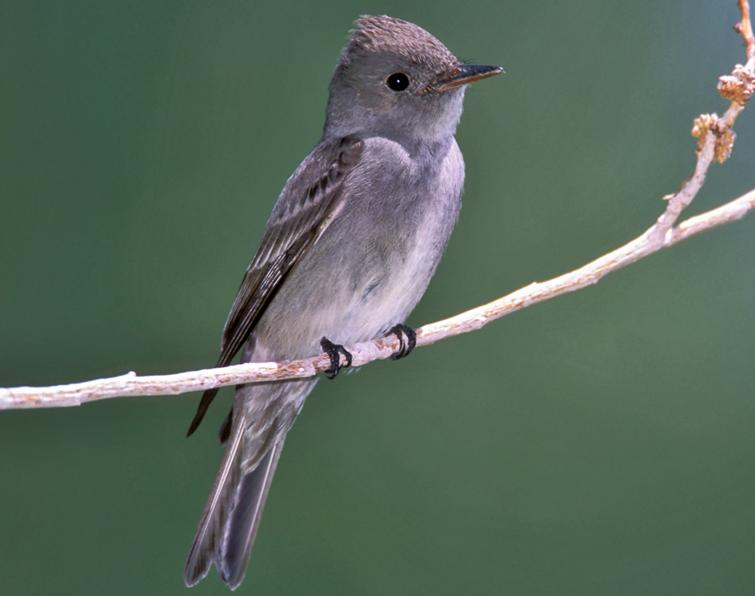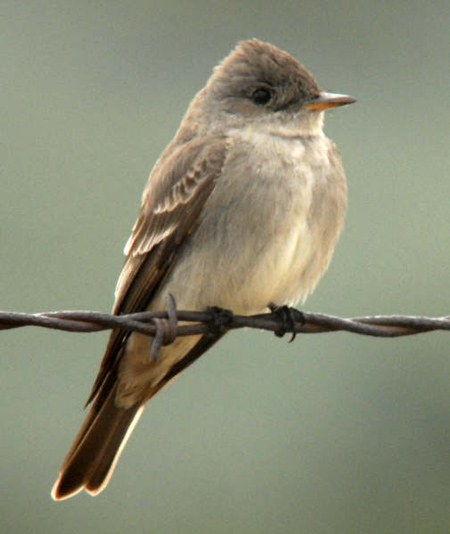
Contopus sordidulus
SUBFAMILY
Fluvicolinae
TAXONOMY
Contopus sordidulus Slater, P.L., 1859.
OTHER COMMON NAMES
French: Pioui de l’Ouest; German: Forst-Piwih; Spanish: Pibн
Occidental.
PHYSICAL CHARACTERISTICS
6.25 in (16 cm). Dark grayish brown plumage overall, with
paler underparts and two thin white bars on wings. Bill is dark
with yellow-orange lower mandible base.
DISTRIBUTION
Central Alaska south across most of the western half of North
America, through western Mexico and Central America. Winters
from Panama to Peru.
HABITAT
Inhabits riparian woodlands, and open, mountainous, mixed
conifer and hardwood forests.
BEHAVIOR
Solitary dweller, remains mostly quiet and hidden. Sings “tseetee-
teet!” on breeding grounds. Also uses soft, nasal whistle
“peeer!” Frequently sings until after dark and before daylight.
Shakes its wings when landing on perch. Migratory.
FEEDING ECOLOGY AND DIET
Perches to watch for food; hawks prey in midair. Eats variety
of flying insects; occasionally feeds on spiders and berries.
REPRODUCTIVE BIOLOGY
Breeds monogamously once per year. Nest is cup-shaped, built
by the female, and sits on a horizontal branch of a (usually
coniferous) tree, bound to the branch by spider web. Brood is
two to four eggs, incubated by the female for 12 to 13 days.
CONSERVATION STATUS
Not threatened, though some populations in California are declining
for unknown reasons. Vulnerable to deforestation in
wintering areas.
SIGNIFICANCE TO HUMANS
None known.
Other popular Animals
Photo Gallery of - Western wood-pewee




 Animalia Life
Animalia Life